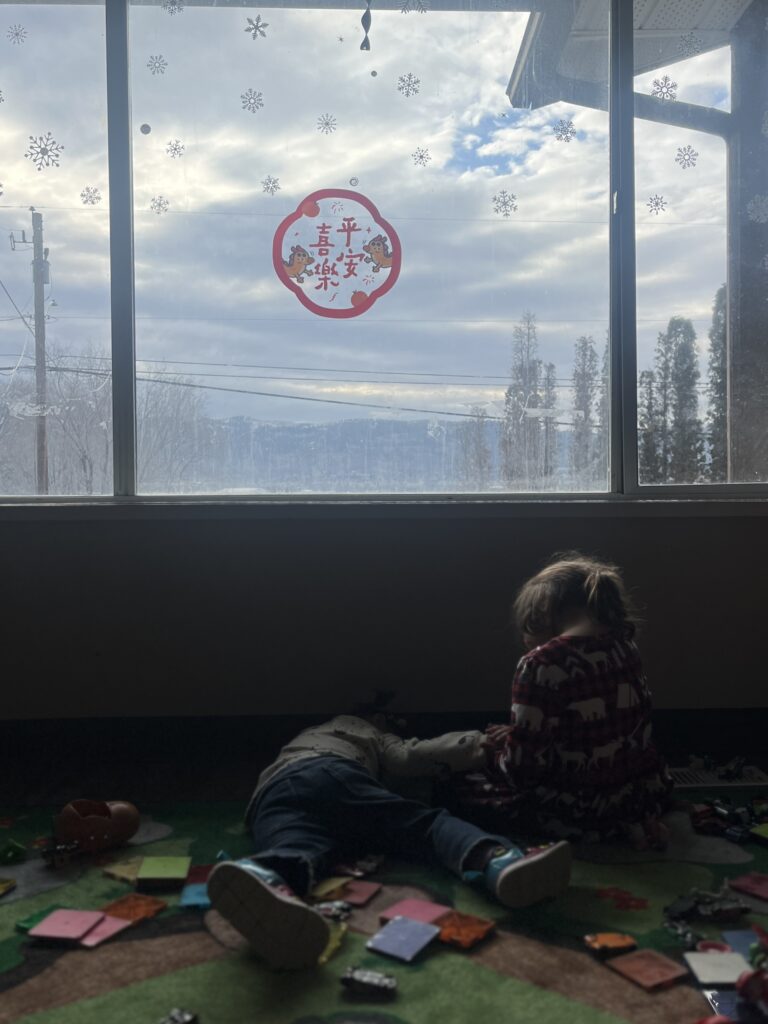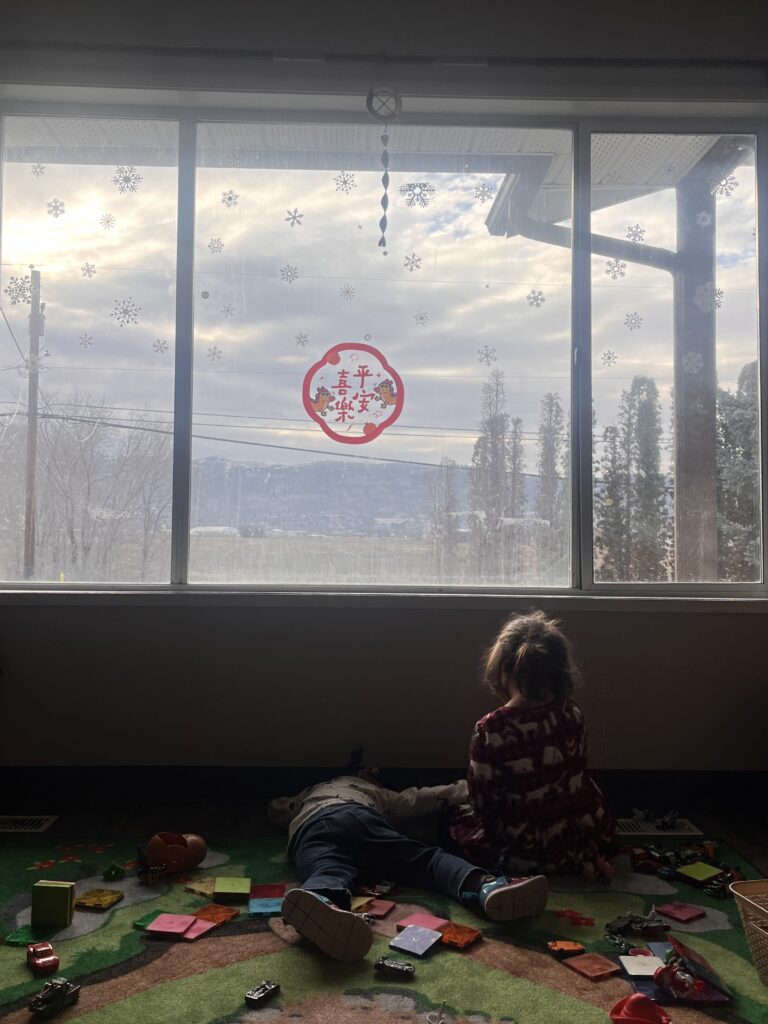Before R got down on the floor, H refused her proposal of adding one more magnetic tile to the structure that they were working on. Once onthe floor, she grabbed randomly at toys around her, lick them, and throw them away. I knew what I saw, so I went over to her and said, “R, Iunderstand that you are upset, but I can’t let you treat the toys like this. I am here for you when you are ready.” She then began to sob, buryingher face in between her arms. I kept on talking to her and told her that it is okay to feel sad, but she was too overwhelmed by the emotion andthe sob became more intense. I reminded her of the breathing technique that we learned this morning in a book, ”do you remember the bunnybook? Take a breath. It is okay.”
I could feel that H had her eyes on me all the time when I was communicating with R, and upon seeing me do the breathing, she came over andsat by the other side of R, took her hand, and said gently, “It is okay, R, I am here.” She continued, “R, don’t be sad. Take a deep breath likeme. See it? Breath in… and breath out.” Noticing that H was taking the “role” of comforting R, I retreated and watched how R’s sobbing went weaker and weaker, until it went away completely. R stayed on the floor for a few more minutes, with H by her side, and before I realized, the two girls were playing the magnetic tiles together again.



About the learning and my reflection
I was paying attention to the interaction of the two children and noticed the frustration behind the behaviour of licking and throwing away toys. I wanted to give R the emotional support, and also show her how to feel better by taking deep breath instead of using the toys as a way ofexpress her feelings, so I made a choice to sit by her, tell her I will be there for her when she was ready, and mentioned the bunny book that sheand I just read that morning. When I noticed that H would like to offer her own support to R, I made a choice to let her take over, with the intention of offering both of them opportunity to learn to communicate, to empathize, and to manage their own behaviours and emotions.
This moment is significant to me because it showed me the capability of children being compassionate to others, and their sense of compassionis gained through observing and learning. When I first saw R being frustrated on the floor, I did not expect H would say or do anything, what I had in mind was to give R the emotional support, not to teach Hazel to be compassionate. So, when the moment came, I realized that there was another approach to deal with the situation.